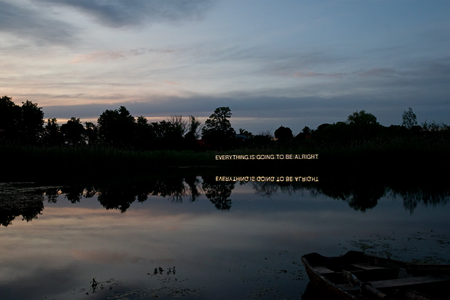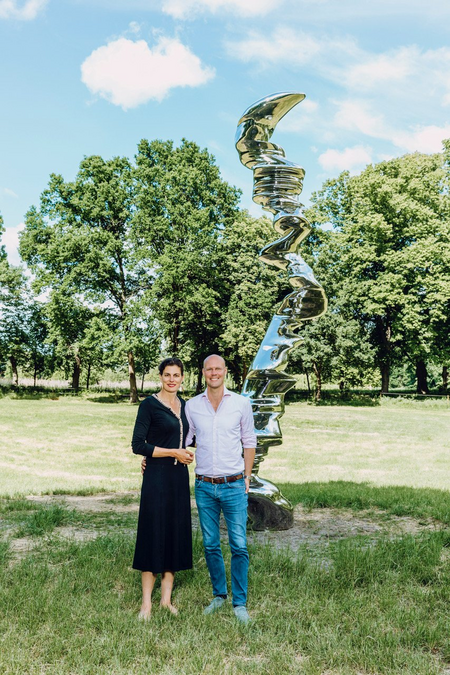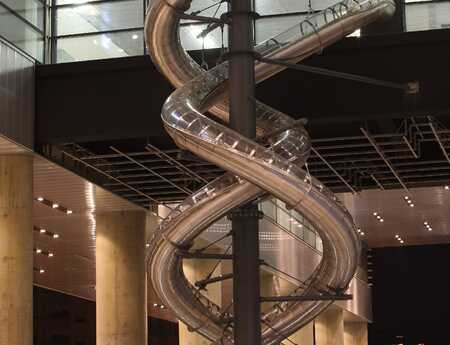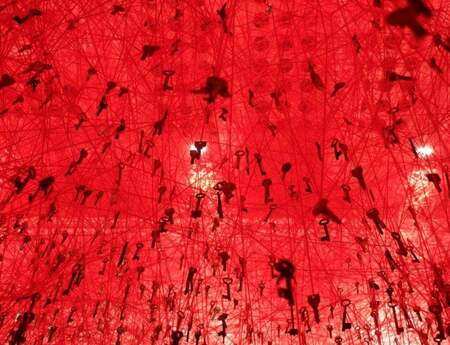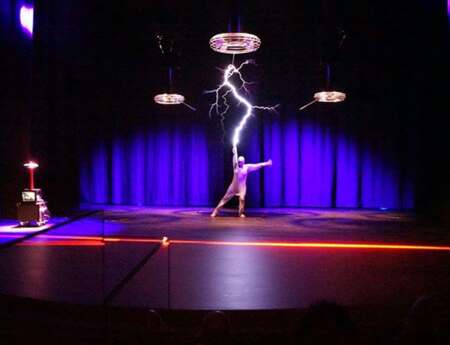Everything is going to be alright
Surrounded by fields, ditches and forests of the Oberhavelland region, the baroque Schwante Castle is located 25 km northwest of Berlin. Here, Loretta Würtenberger and Daniel Tümpel created a lively place for art, nature and enjoyment. Ursula Karpowitsch spoke with them about the concept and the creation of an extraordinary sculpture park.
How did you choose the sculptors you wanted to exhibit in Schwante Sculpture Park? Did they approach you, was it a no-brainer at some point, or what was it like?
Daniel Tümpel (DT): In the sculpture park, we explore the question of how sculpture and nature converse with each other. How have sculptors from Hans Arp to the present day thought about nature, behaved towards nature, made nature part of their work? We have chosen the artists we are showing accordingly. For example, Toshihiko Mitsuja, who creates flower fields out of aluminium, or Tony Cragg, whose biomorphic forms are reminiscent of natural forms and yet are clearly an artefact. Then there are artists, such as Björn Dahlem, who deal conceptually with the phenomena of nature.
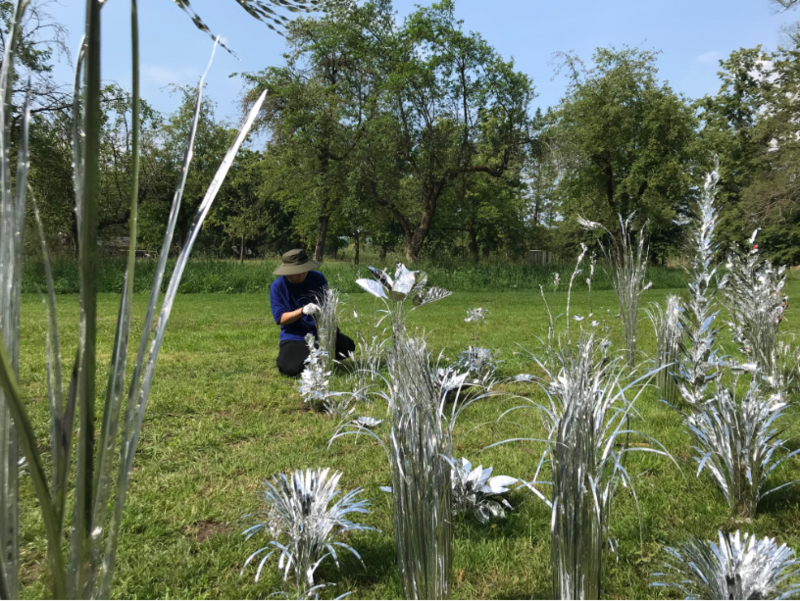
It certainly plays a big role for the artists that they can choose where they want to place their sculptures?
DT: The artists have a great sense of how the interaction with nature takes place and what the environment must look like for the work to unfold optimally. Take for example the work by Jehudith Sasportas: she placed it under the dreamlike weeping willows and demanded that they be cut to a height of one metre, that the grass could be so and so long, and that fitted perfectly. Or take the work of Dan Graham. His employees flew over especially for the occasion and then FaceTimed the artist to choose the right spot. Finally, one of them stood up and was directed around the property metre by metre, here and there, until Graham said “here!”, that's where the work should go. And it fitted wonderfully.
You have unbelievable possibilities. There is even water. Another plus point.
DT: Martin Creed’s work Everything is going to be alright.
That’s how visitors are received. That’s great. And now more than ever you have the feeling: yes, hopefully! That’s optimism par excellence.
DT: We decided that mentally we put an exclamation mark on the work rather than a question mark, because that's a positive look into the future.
You are also an employer. How many people worked for you last year?
DT: It was a handsome team of twenty employees: Cooks, service staff, the staff who give the guided tours, gardeners. We had many, many visitors per weekend and they had to be catered for accordingly, on the one hand with food and on the other hand in the “Hofladen”, our farm shop.
There is another aspect that is very close to our hearts. Schwante Castle has always been the centre of a business. It used to be an agricultural business in the Brandenburger Land. With the sculpture park we have found a form that suits us and is also contemporary. Plus, it can be connected in a complementary way.
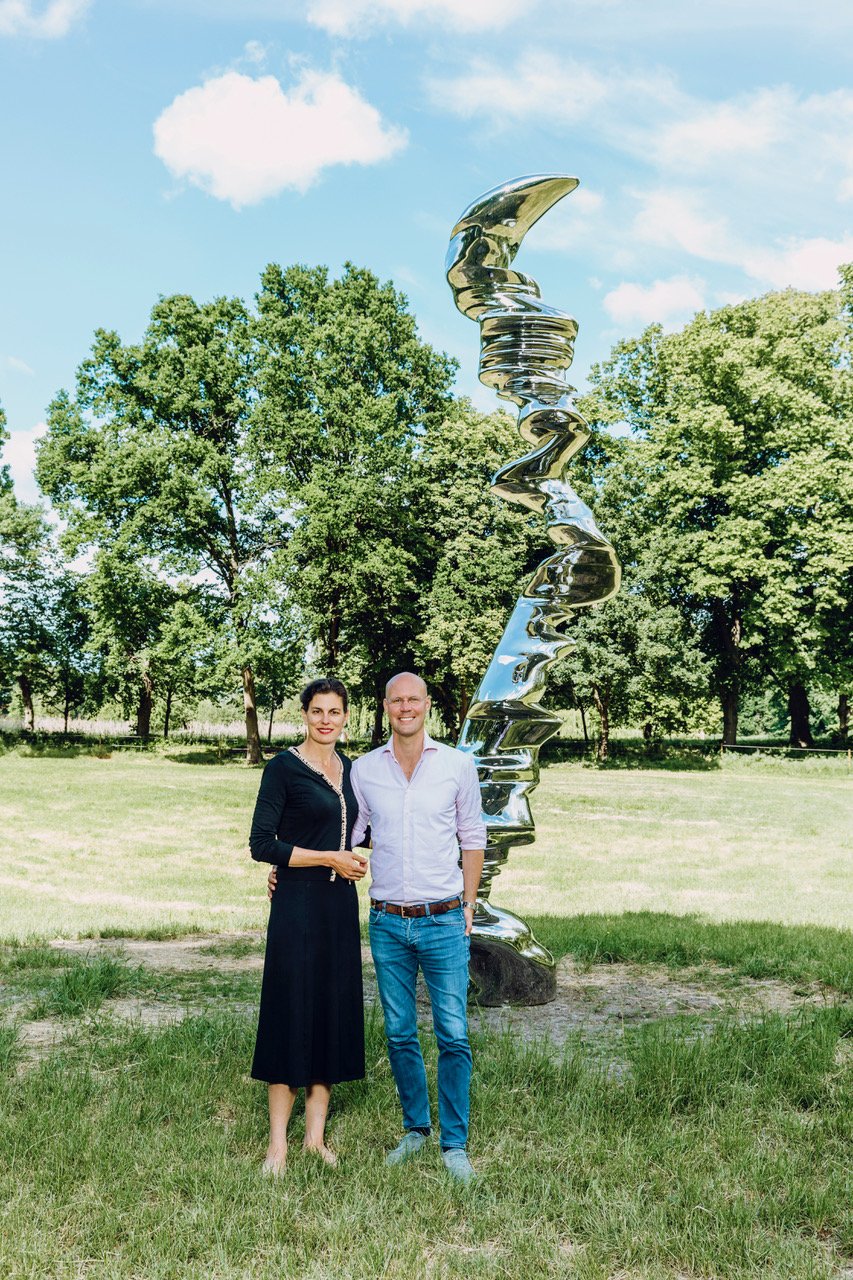
How were you welcomed in Schwante?
Loretta Würtenberger (LW): It is important to us to connect our contribution with what has always existed here. That's why we have the programme for the summer, the apple festival, the village festival, the fact that we run the farm shop. All these things build bridges and so feel amazingly natural together. We also want the people of Schwanten to be able to drink a beer here in the evening, regardless of whether they like the sculpture park or not. That we fit into the existing structures. The longer we are here, the more we feel how much civic and business engagement there already exists in the community. We are just one of many local businesses. It is important for us to take a step back and integrate ourselves here. We don’t want to clash, we want to feel comfortable.
I suppose the sculptors are very happy with the fact that there were many thousands of visitors last year? What was the response like?
LW: Very good. When I think of Katja Strunz’ work, which was pictured everywhere. And from this great media response, things evolved. When the artists profit from it, that is what makes us most happy.
DT: And it's also great for the galleries. Some have come here with the collectors and said, look, this is what it looks like outside. It would also fit in your garden (laughs)!
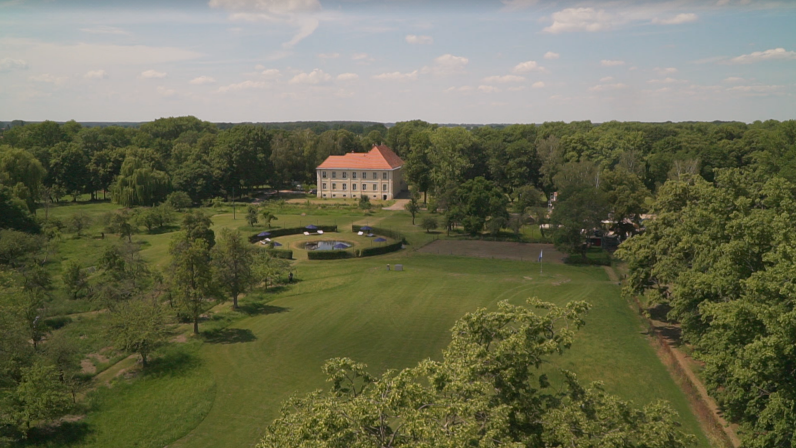
What are the plans for the future?
LW: It must remain full of life. In the beginning, we thought we’d redo everything every two years. Then after a year, some artists came and said it was so beautiful here. Would you be interested in keeping it for ten years? For example, the work of Carsten Nicolai. Then we also talked a lot with the visitors. We know from our own experience: when I go to Louisiana [Denmark], I would be sad if everything was constantly changing. I would also return to old friends in museums. Although I want to see something new, I find it insanely beautiful to be able to visit works again. So we decided that every year there should be something new, but at the same time we keep something already there. So it is organic in that respect, too. We call it a ‘breathing’ concept.
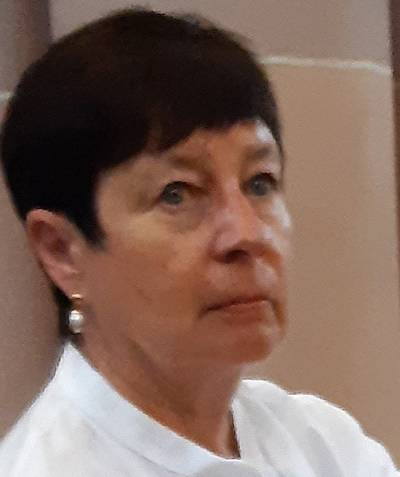
Author: Ursula Karpowitsch
Cover Picture: Martin Creed: Work No. 1086, Everything is going to be alright. 2011, neon glas work, 44 x 1250 cm, Unikat. © Martin Creed, courtesy Hauser & Wirth
